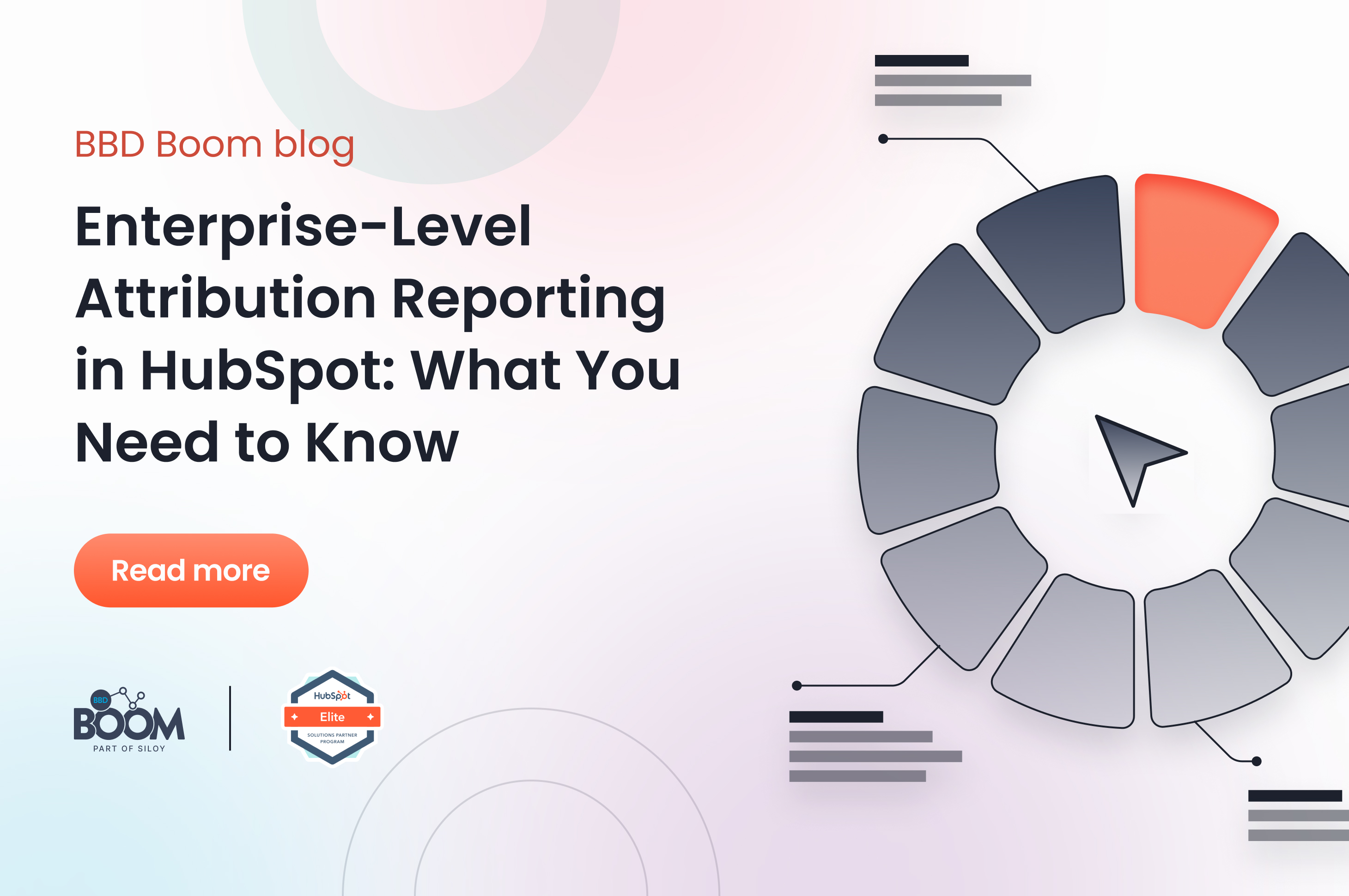When it comes to marketing at the enterprise level, there's one question that keeps coming up:
“Which touchpoints actually move the needle?”
If you're spending serious budget across paid media, content, events, partnerships, and sales enablement, you want to be 100% sure what’s driving results—not just clicks.
That’s where attribution reporting in HubSpot comes in. But while HubSpot makes reporting accessible, things get a little more nuanced (okay, a lot more nuanced) when you’re operating at enterprise scale.
So whether you’re in Marketing Ops, RevOps, or leadership, this guide is for you. Let’s break down how HubSpot handles attribution reporting—and how you can actually use it to make smarter decisions.
What Is Attribution Reporting in HubSpot?
At its core, attribution reporting is all about understanding which interactions along the customer journey are influencing contacts to convert or deals to close.
HubSpot gives you a range of attribution models to choose from:
-
First-touch – Credit goes to the first interaction (great for identifying demand-gen efforts).
-
Last-touch – Credit goes to the last interaction (helpful for measuring conversion triggers).
-
Linear – Equal credit across all touchpoints.
-
U-shaped – Heavy credit to first and lead-converting interactions.
-
W-shaped – First, lead conversion, and deal creation share most credit.
-
Time-decay – More recent touchpoints get more credit.
-
Full-path – Spreads credit across the full lifecycle (ideal for RevOps!).

Why Attribution Gets Harder at the Enterprise Level
Let’s be honest—attribution is never easy, but it’s especially challenging when:
-
You have longer sales cycles with multiple stakeholders.
-
Marketing, SDRs, AEs, and CS are all influencing the deal at different points.
-
You're running campaigns across multiple channels—LinkedIn ads, webinars, SEO, ABM, outbound… you name it.
-
Different teams are reporting in different ways.
At this level, a simple "last-click wins" report just doesn’t cut it.
HubSpot Enterprise Features That Make a Difference
If you're using HubSpot Enterprise, you’ve got some powerful tools under the hood—many of which aren’t fully tapped into by default. Here's what to take advantage of:
1. Revenue Attribution Reporting
Track which interactions contributed to actual closed revenue, not just form fills or MQLs.
2. Multi-Touch Attribution Models
Compare different attribution models side by side in custom reports to get a more holistic view.
3. Custom Events
Track meaningful milestones beyond standard page views—like demo video completions, product logins, or pricing page interactions.
4. Ad Attribution & Campaign Analytics
When integrated properly, you can bring in UTM parameters, Google Ads, LinkedIn Ads, and campaign associations for crystal-clear reporting.
5. Operations Hub
If you’re using Ops Hub Enterprise, you can layer in datasets, calculated fields, and even SQL queries to model complex funnel behaviour.
Building an Attribution Framework That Works
It’s not just about choosing a model. Attribution only works when it’s part of a bigger operating rhythm. Here's a framework we often recommend:
Step 1: Align on KPIs
Make sure Marketing, Sales, and Leadership are speaking the same language around goals and reporting.
Step 2: Map Your Funnel
Define your key funnel stages—awareness, lead gen, SQL, pipeline, closed won—and the touchpoints that influence each one.
Step 3: UTM Hygiene Is Everything
Standardise how you tag campaigns. Seriously. It’s painful to untangle bad tracking six months down the line.
Step 4: Choose Your Models Wisely
Use first-touch for demand-gen, W-shaped for ABM, and full-path when you want a revenue-aligned view.
Step 5: Create Dashboards People Actually Use
No more static spreadsheets. Build HubSpot dashboards that are searchable, filterable, and updated in real time. Train your team to interpret the data.
Common Pitfalls to Avoid
Even with the best tools, enterprise attribution can fall short if you’re not careful. Watch out for:
-
Over-relying on one model – No single model tells the whole story.
-
Misaligned teams – If Sales and Marketing aren’t aligned, attribution becomes a blame game.
-
Dirty CRM data – Attribution is only as good as the data you feed it.
-
Ignoring offline interactions – Events, calls, and partner referrals need to be captured manually or with integrations.
Attribution shouldn’t just be another report buried in your dashboard—it should be the foundation of how your GTM teams make decisions. If you're not confident in your current setup or feel like you're only scratching the surface of what HubSpot Enterprise can do, you're not alone.
Our team specialises in building attribution frameworks that are practical, scalable, and tailored to your unique funnel. Let’s chat about your attribution goals.
.png?width=877&height=508&name=bbd-boom-siloy-navy+blue-logo%20(1).png)
.png)

.jpg)

-1.png?width=50&name=Webinar%20Speakers%20(1)-1.png)

-1.png?width=90&name=Webinar%20Speakers%20(1)-1.png)


.png?width=352&name=BBD-Boom-1%20(2).png)